45 Most Common Houseplants to Grow in Your Space
Parade aims to feature only the best products and services. If you buy something via one of our links, we may earn a commission.
When you think about it, plants are like pets. Stick with us here. No, you can't snuggle them like you do with a dog or cat, but you can water them and talk to them (or even name them) just like you would a pet or—dare we say it—a tiny human. And if you're looking for this welcome addition to your home, we've got 45 of the most common houseplants to grow in your space.
"Houseplants are fun to come home to, like a pet," says Lisa Eldred Steinkopf, The Houseplant Guru. "Watching them grow, especially if you start with a cutting or small plant, is so rewarding."
Unlike babies and pets, plants are quiet companies, but they breathe life into a space.
"Plants add extra color to home decors, but they also help to purify the air, and there’s a certain sense of excitement and accomplishment when plants bloom or produce a new, showy leaf," says Lauren Landers, a Maine Master Gardener volunteer.
That sense of accomplishment can also be life-giving for the grower—or at least improve their mental health. A 2022-published review pointed to some previous studies that showed keeping indoor plants helped reduce stress.
"The touch of life plants add to my home make it more comfortable and welcoming," says Justin Hancock, a horticulturist with Costa Farms.
Bringing some house plants into your space sounds like a slam dunk. Yet, you may be hesitant because you've had far more luck keeping pets (and humans) alive than plants. However, previous attempts may have stalled because you made things more complicated than they needed to be by choosing a difficult plant to keep indoors.
"While there are ways to make the environment in your house more like the natural habitat of your houseplant, some plants will simply not thrive when kept indoors," says Fern Berg, the founder of Tree Vitalize.
What plants can thrive? Green thumbs share 45 of the most popular houseplants.
Related: Breathe Easier With These 34 Air-Purifying Indoor Plants for Your Home or Office
45 Most Common Houseplants for Your Home
1. Rubber Plant (Ficus Burgundy)
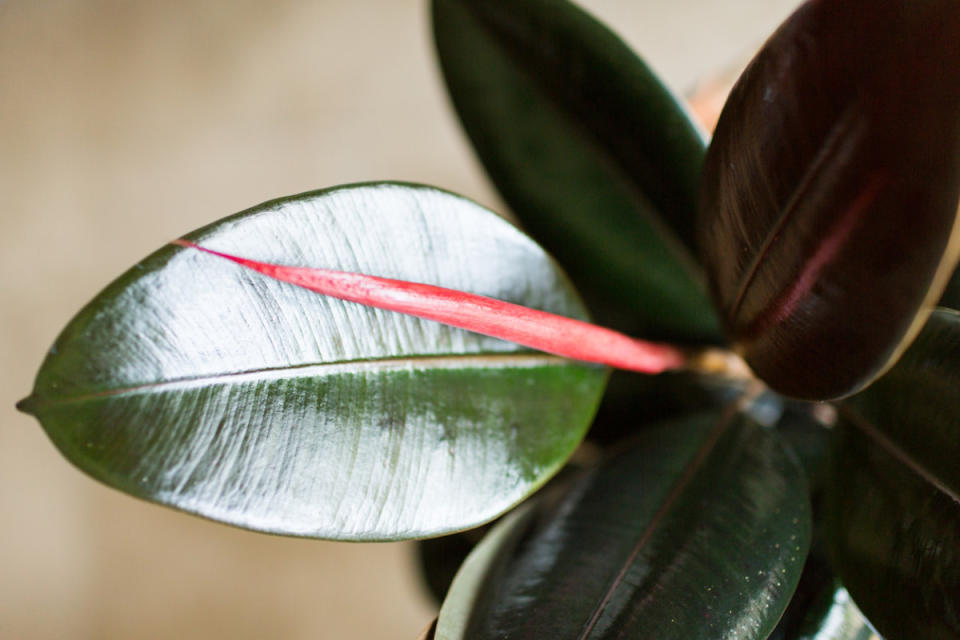
iStock
Don't let the "rubber plant" thing fool you. The ficus burgundy is real—and stunning.
"The ficus burgundy is loved for its striking burgundy-colored foliage, which adds a touch of elegance and drama to any space," says Autumn Hilliard-Knapp, a horticulturist with Perfect Plants. "This plant is also known for its air-purifying qualities, effectively removing toxins from the air and creating a healthier indoor environment."
Hilliard-Knapp says these plants thrive at room temperature (60-75°F) and in bright spaces with indirect light.
Related: Got a Green Thumb? Get Ready To Give This ‘Monstera’ List of Plant Memes a Big Thumbs Up
2. ZZ Plant (Zamioculcas Zamiifolia)
One of the most recommended plants by experts, the ZZ plant's low-maintenance nature makes it an excellent plant for budding indoor plant parents.
"These plants require very little water, and they can grow in shady corners that other houseplants won’t tolerate," Landers says. "Classic ZZ plants have glossy green leaves and an upright growth habit, but gardeners can also find less common ZZ plant variants, like Raven ZZ, which has dark, near-black leaves."
3. Hurricane Fern (Asplenium Antiquum)
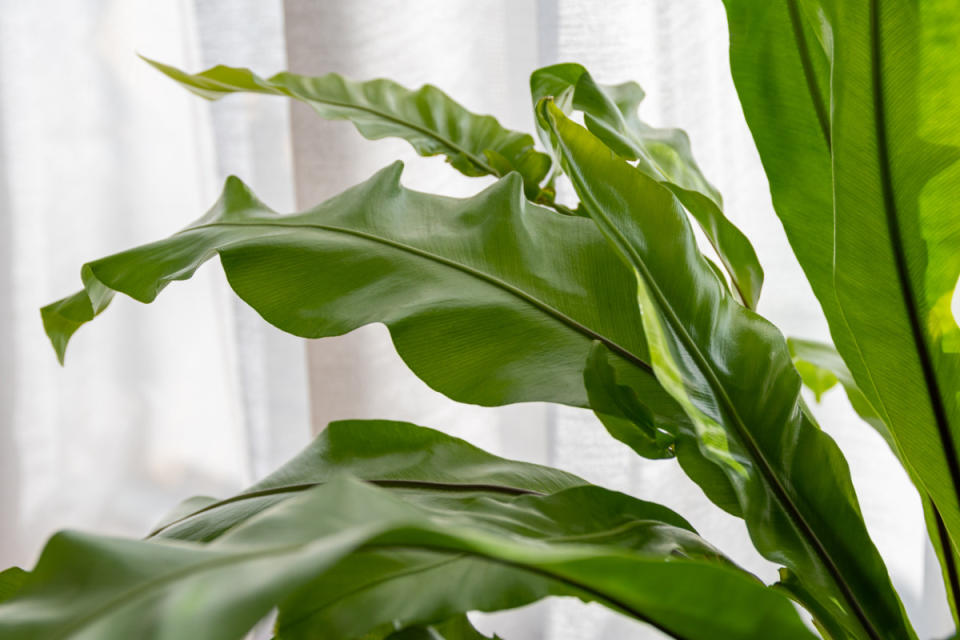
iStock
The common name and bright green color make the hurricane fern seem high-maintenance at first glance.
"You’d think a plant that looks this exotic would have pretty exacting care needs, but happily, the hurricane fern is delightfully easy-going," says Hancock.
The plant thrives in bright light but can tolerate medium light too. A temperature range of 65-80°F—about room temperature—is just right. About the hurricane moniker, though.
"It’s earned its common name because it grows strap-like fronds from a central base," Hancock says. "As the fronds grow, they gently twist in a clockwise fashion, making the plant look like a hurricane seen from above."
4. Aloe Vera
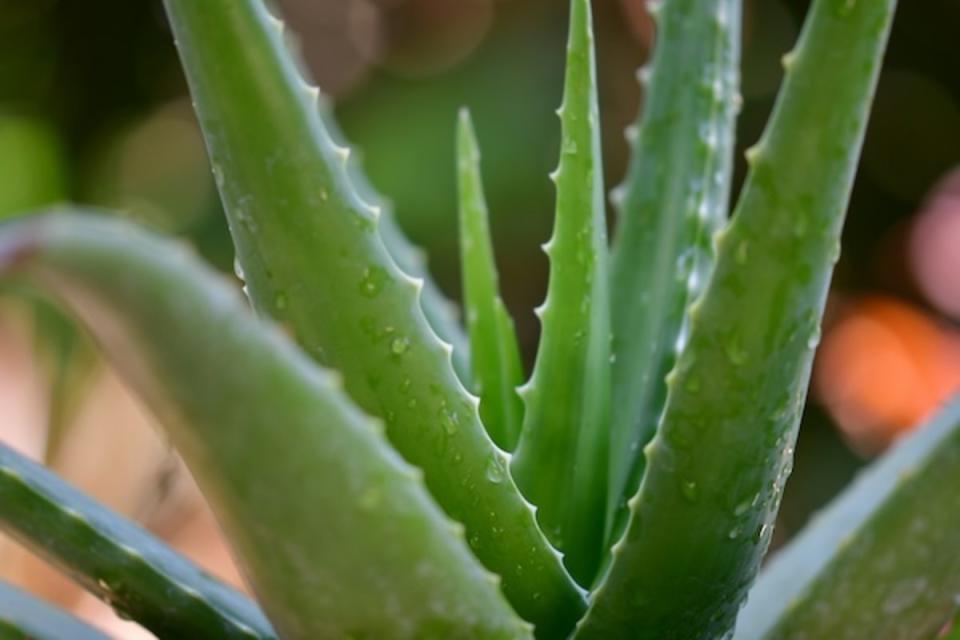
Unsplash
The plant is largely responsible for the lotion you lathered on after forgetting to reapply sunscreen, and it also makes a lovely house companion. Aloe vera, a succulent, thrives in a bright space with minimal watering.
Related: These 75 Different Types of Succulents Are Not Only Gorgeous—but Also Hard To Kill
5. Golden Pothos (Epipremnum Aureum)

iStock
Sometimes called devil's ivy, the Golden Pothos is a heavenly houseplant. Just peep the trailing vibes and heart-shaped leaves.
"It is incredibly versatile and can thrive in a wide range of lighting conditions, making it suitable for any home or office," Hilliard-Knapp says. "Besides its aesthetic appeal, this plant is known for its ability to purify the air by removing common indoor pollutants."
6. Croton (Codiaeum Variegatum)
These tropical plants with colorful foliage exude warm summer vibes and cozy fall ones simultaneously. Croton plants do well in bright and indirect light. However, they do require more care than a succulent. They prefer humid settings (naturally), so you may need a humidifier to help them thrive.
7. Monstera Deliciosa
Landers calls the Monstera deliciosa the quintessential houseplant.
"The Monstera deliciosa is much loved for its distinct, glossy green leaves," Landers says. Monsteras make a big impact on home decor, but be warned: they grow large, and you’ll need plenty of room to keep them. Despite their tropical look, Monsteras are relatively easy to care for, but larger plants may need a support pole to keep them upright."
Nicknamed the "Swiss Cheese plant," the Monstera deliciosa prefers bright but indirect light.
8. Little Swiss Monstera
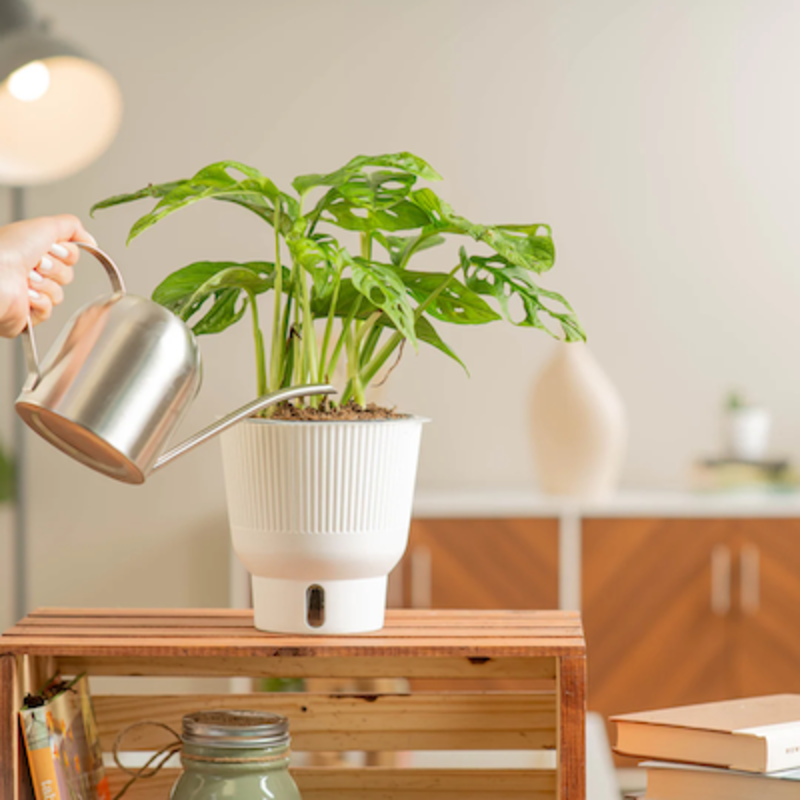
Costa Farms
Don't have space for the Monstera deliciosa? Meet its smaller relative, the little Swiss Monstera. Hancock says this plant is trending with Costa Farms customers.
"You can create a delightful interplay of light and shadow through these holes, making it fun to pair with more colorful houseplants like Pink Princess Philodendron or Chinese Evergreens," he explains.
9. Ponytail Palm Tree (Beaucarnea Recurvata)
Want something quirky? Consider the ponytail palm tree that gets its name for a reason.
"The ponytail palm tree features a striking thick trunk that resembles a ponytail, hence its name," Hilliard-Knapp says.
Its unique, hairstyle-resembling look isn't the only thing plant caretakers love about the ponytail palm tree. It's a charming but low-key resident of any home.
"This plant requires minimal care and is highly drought-tolerant, making it an excellent choice for busy plant owners," Hilliard-Knapp explains.
10. Snake Plant (Dracaena Trifasciata)
The snake plant is also known as the mother-in-law's tongue, devil's tongue, or sansevieria.
"If you are looking for a tough-as-nails plant, the snake plant is it," Berg says. These plants handle neglect and are unfussy about light exposure—tolerating both bright and low light."
It doesn't sound like any mother-in-law I know. The snake plant is also drought-tolerant.
"You may only need to water your snake plant every few weeks, depending on the humidity and light levels your plant is exposed to," Berg says. "It is also very pest resistant and a great air purifier."
11. Chinese Money Plant (Pilea Peperomioides)
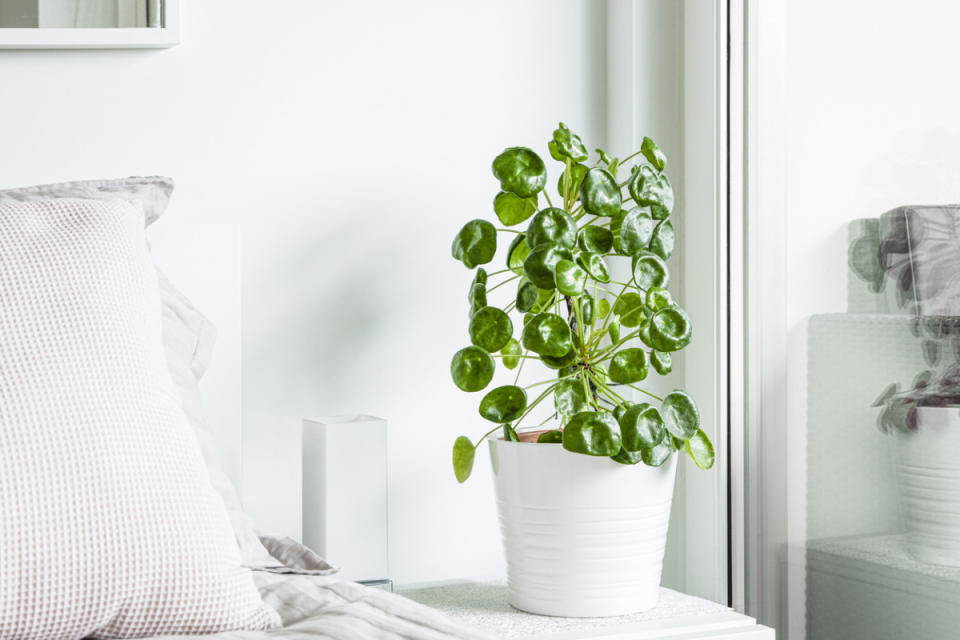
iStock
Also known as the Chinese money plant or pancake plant, the Pilea peperomioides is hallmarked by its charming, circular leaves that resemble coins (hence the nickname).
"It's another one that's easy to keep around, thriving in bright, indirect light at average room temperature," says Hilliard-Knapp. "Keep an eye on its topsoil and refrain from watering when it's still wet."
Remember how we compared plants to dogs? If you dug that, check this out.
"This plant is highly regarded for its ease of propagation," Hilliard-Knapp says. "It readily produces offsets or pups, making it easy to share with friends and fellow plant lovers."
Holiday gifts? Check, done.
12. Fiddle Leaf Fig Tree
This trending plant is a living statement piece.
"The fiddle leaf fig tree has gained immense popularity in recent years due to its dramatic, large, violin-shaped leaves," Hilliard-Knapp says. "It makes a bold statement in any room and has become a popular choice for interior decoration. Although it requires a bit more attention and specific care, this plant's striking appearance justifies the extra effort for many plant enthusiasts."
Notably, Hilliard-Knapp advises people to ensure the plant is not placed in direct afternoon sunlight. It's best suited for bright and indirect light.
13. Albo Pothos (Epipremnum Pinnatum Albo Variegata)
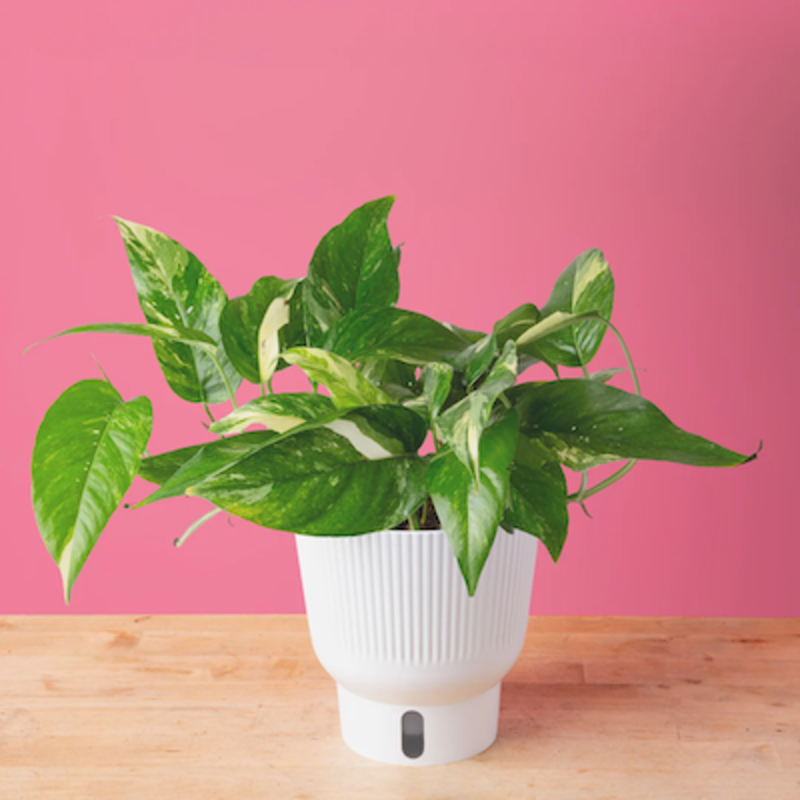
Costa Farms
It's hard for Hancock to pick a favorite thing about this trending tropical plant.
"It’s pretty fast growing, and it’s super easy to propagate and share," he says. "If you let it grow up, the leaves get bigger and more decorative as they develop fenestrations, [which are] artful slits in the sides...If you don’t want a climbing plant, you can also grow it in a basket and let it trail. It’s just so pretty and so versatile."
The plant prefers bright light but will tolerate medium brightness. A 65-80°F temperature range will do. As for watering, Hancock says the Albo Pothos "does best when watered as the top quarter or so of the potting mix dries to the touch."
14. Cool Beauty Dieffenbachia (Dieffenbachia Cool Beauty)
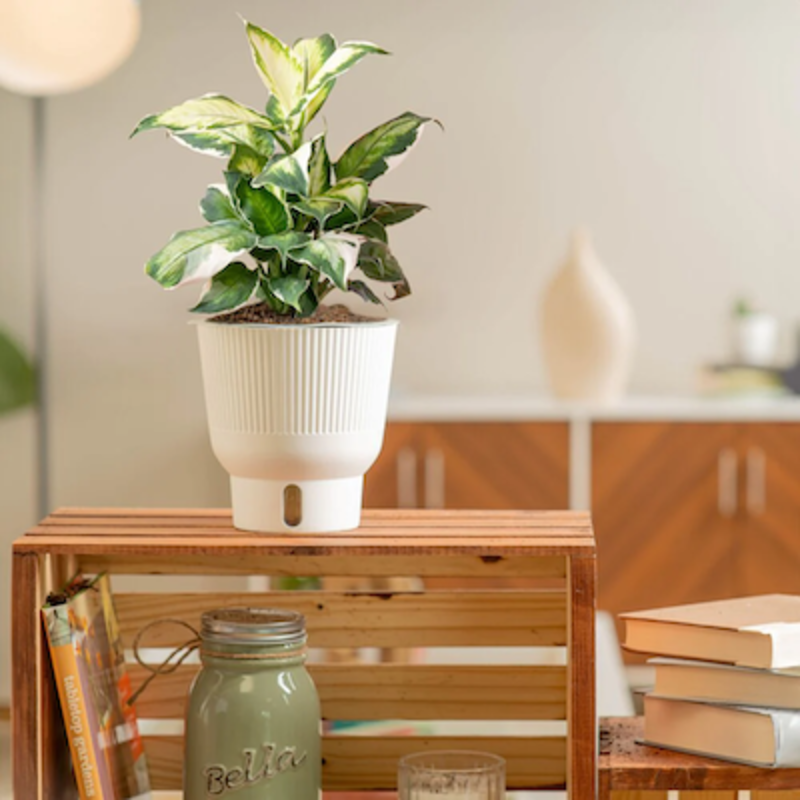
Costa Farms
According to Hancock, the cool beauty Dieffenbachia is a prime example of a hot trend in plants: variegation, or the appearance of different colors on leaves, stems and fruit.
"The oval-shaped green leaves are playfully outlined in white and have creamy-golden centers," he explains. "It’s a fabulous selection to brighten just about any room of your home."
This plant is considered a "dwarf variety," which doesn't mean it goes small on its beauty—quite the opposite, actually.
"Unlike old-fashioned types that can get 6 feet tall with lanky, leafless stems at the base, it stays full and bushy," Hancock says.
15. African Violet (Saintpaulia Lonantha)
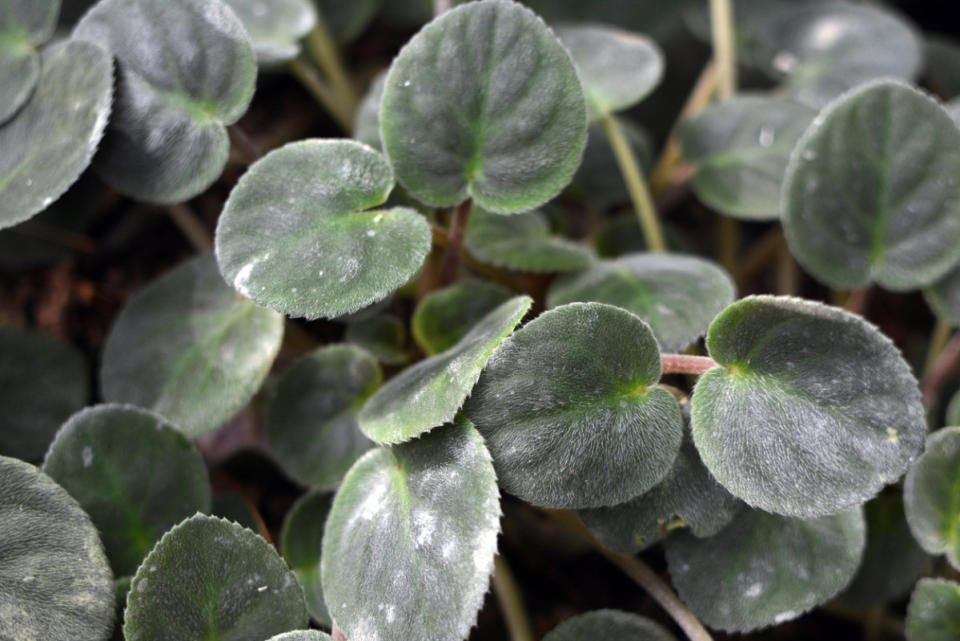
iStock
The African violet is a classic house plant—and doesn't only bloom in purple. Don't be surprised to see shades of pink, white and blue. While they add a big pop of color to a home, they don't grow big.
"Their compact size makes them ideal for desks, shelves and windowsills," Berg says.
"Just make sure they won’t receive direct sunlight, which can scorch their leaves. Instead, place your African Violet in bright, indirect light and watch it bloom."
Related: Polka Dot Plant Care! How To Grow Pink Polka Dot Plants Indoors
16. Philodendron Hederaceum
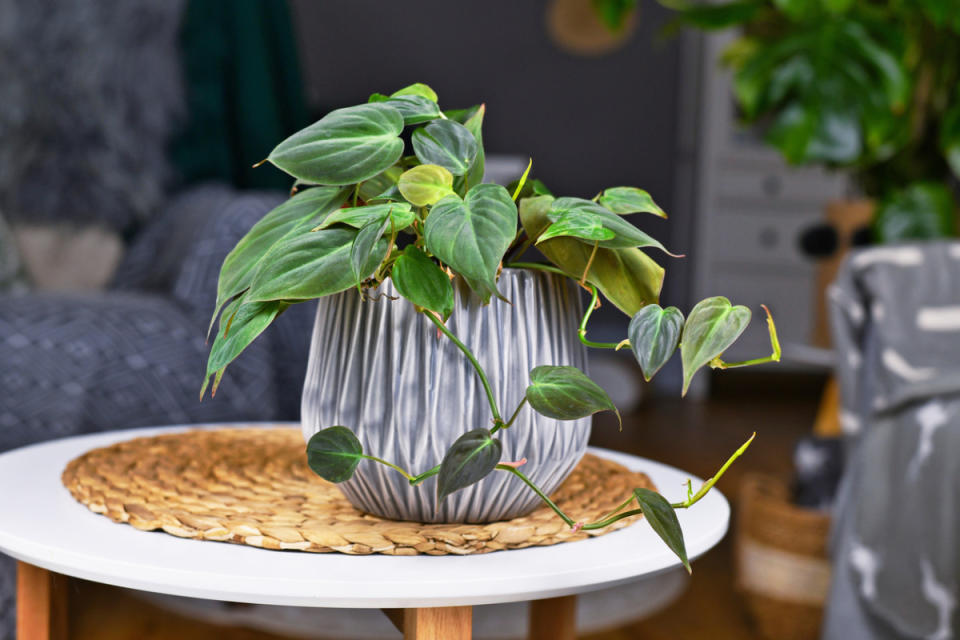
iStock
Philodendrons come in many forms, but Steinkopf's favorite is the Philodendron hederaceum with charming heart-shaped leaves.
"It's an easy-to-grow vine," Steinkopf says. "It can survive in a low-light situation but thrives with good, bright light. Keep it evenly moist, not too dry or wet."
Although the plant has been around for a long time, Steinkopf says it has evolved. In addition to traditional plain green, you can find it in a brighter green and several variegated forms.
17. Arrowhead Vine
So-called black thumbs, rejoice. These pretty plants with arrow-shaped leaves come in various colors and are great for beginners.
"Like Pothos and Philodendron, arrowhead vines are nearly indestructible houseplants that will adapt to most homes," Landers says. "Although these plants grow best in medium light, they also tolerate shadier spots. Arrowheads may need to be pruned or trellised to keep them from growing wild."
18. Umbrella Plant (Schefflera Actinophylla)
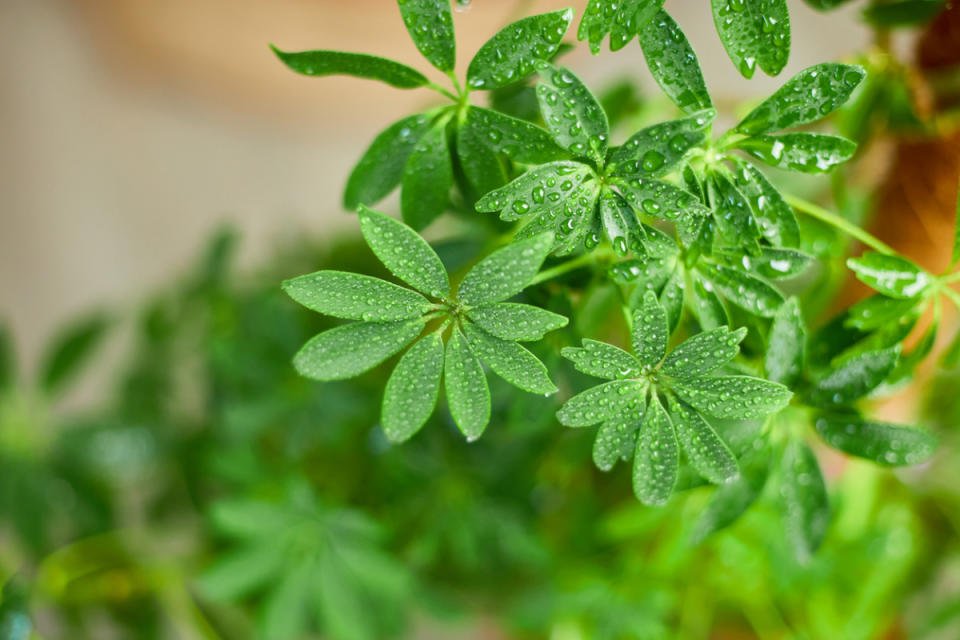
iStock
Rain isn't needed to make the umbrella plant grow—and boy does it grow quickly—but you'll want to be prepared to mist yours during the warmer months. Other than that, allow the soil to dry in between waterings. Repotting is usually necessary with these larger beauties.
19. Money Tree (Guiana Chestnut)
They saw money doesn't grow on trees—and it doesn't grow on the Guiana chestnut. Yet, its fast-growing behavior is money if you're looking for a living, breathing statement piece in your home. Bright, indirect light works well. This plant needs some TLC, especially during dryer seasons. Time spent misting or running a humidifier will pay off as you watch this indoor tree grow.
Related: 30 Best Hard-to-Kill Houseplants That Thrive Even When They're Neglected
20. Spider Plant (Chlorophytum Comosum)
Even if you're new to houseplants, you've likely seen the spider plant in someone's home. Landers calls them another houseplant classic.
"Spider plants have slender, grass-like leaves that are either solid green or striped with brilliant white," Landers says. "Although they make appealing foliage plants, mature spider plants also produce tiny, white flowers, which only enhance their look."
And the fun changes to watch don't stop there.
"Once those flowers fade, spider plants produce lots of baby spider plants, or spiderettes, which can be left on the parent plant or potted up on their own," Landers says.
21. Bromeliads
As an air plant, pretty Bromeliads don't require soil to grow. However, these low-maintenance beauties produce poppy flowers that add color to a space when placed in indirect, bright light.
22. String of Pearls (Curio Rowleyanus)
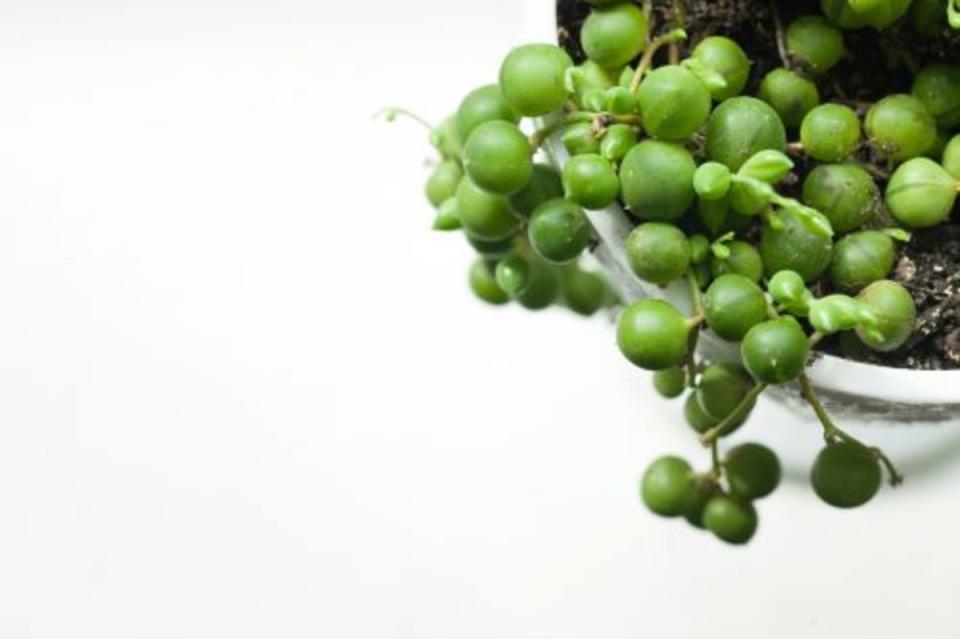
Unsplash
Warning: You may be inspired to pop your collar around these unique plants. As their common name implies, the string of pearls grows in a trailing pattern that resembles the precious gem. As succulents, these plants require little watering—weekly or every other week should do.
23. Zebra Haworthia (Haworthiopsis Attenuata)
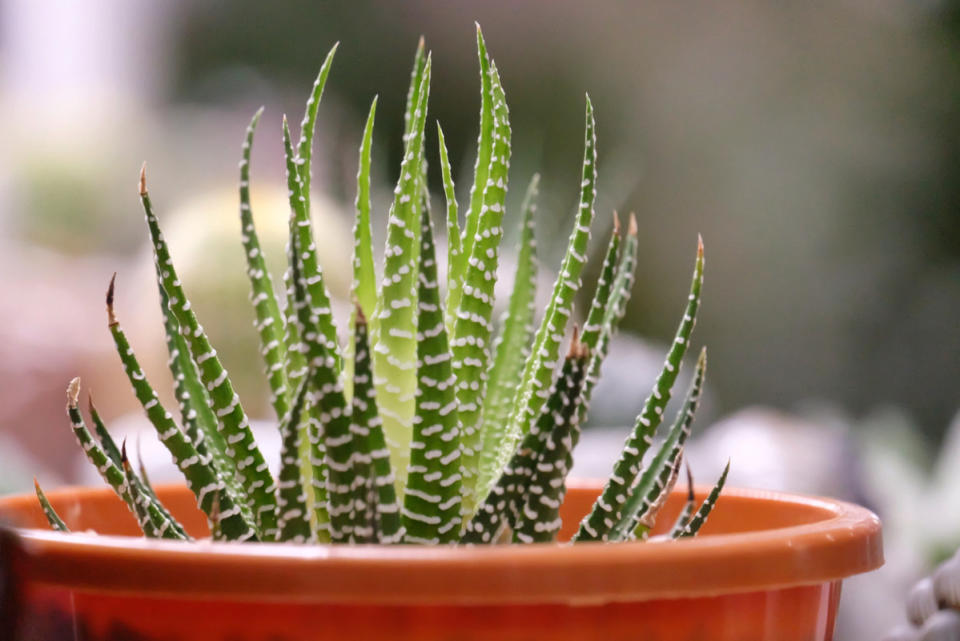
iStock
Another succulent, Landers loves recommending the Zebra Haworthia to people who often forget to water their plants, explaining: "Zebra Haworthia are a particularly popular succulent thanks to their architectural look and spiky, striped leaves. Plus, these plants are non-toxic to pets, unlike the similar-looking aloe plants."
Related: 31 Cat-Safe Plants That You Should Add to Your Collection Right Meow
24. Dragon Tree (Dracaena marginata)
Landers loves Dracaena plants for their colorful, spiky needs and low-maintenance needs. Take the popular dragon tree, which can grow nearly four feet tall and fits beautifully in a corner. Just be sure to pot it appropriately.
"Dracaena grow best in pots with soil," Landers says.
25. Peace Lily
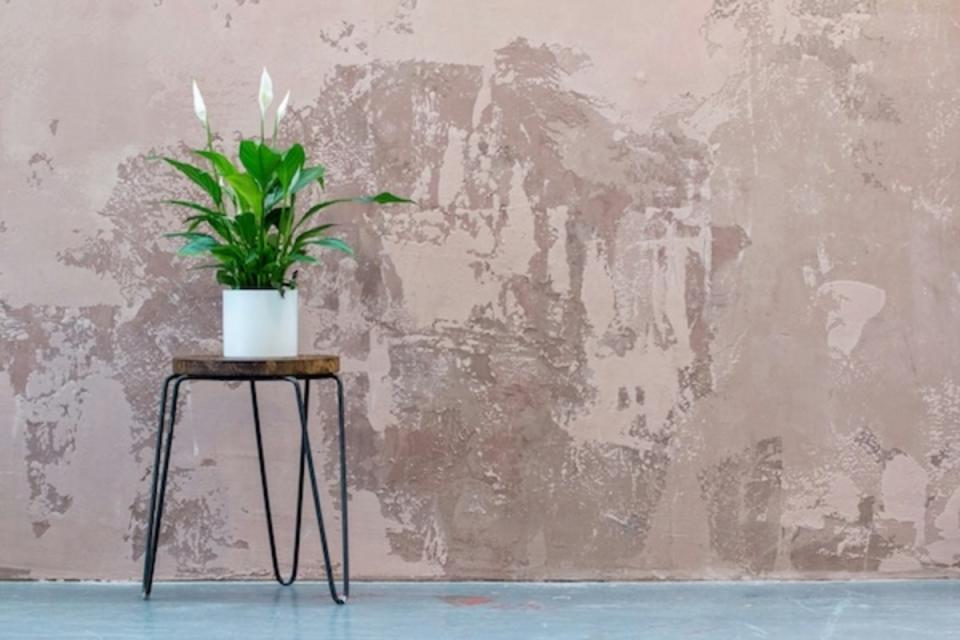
Unsplash
If you want a flowering plant with a tropical flare, Berg recommends getting yourself a peace lily.
"With glossy dark green leaves and beautiful white flower-like spathes that can last for weeks, it is no wonder peace lily is a houseplant staple," Berg says. "These plants can tolerate low light conditions, although they will do best in bright, indirect light. They are not particularly prone to pests, making them a great, low-maintenance option, especially for beginner indoor gardeners."
26. Moth Orchid (Phalaenopsis Amabilis)
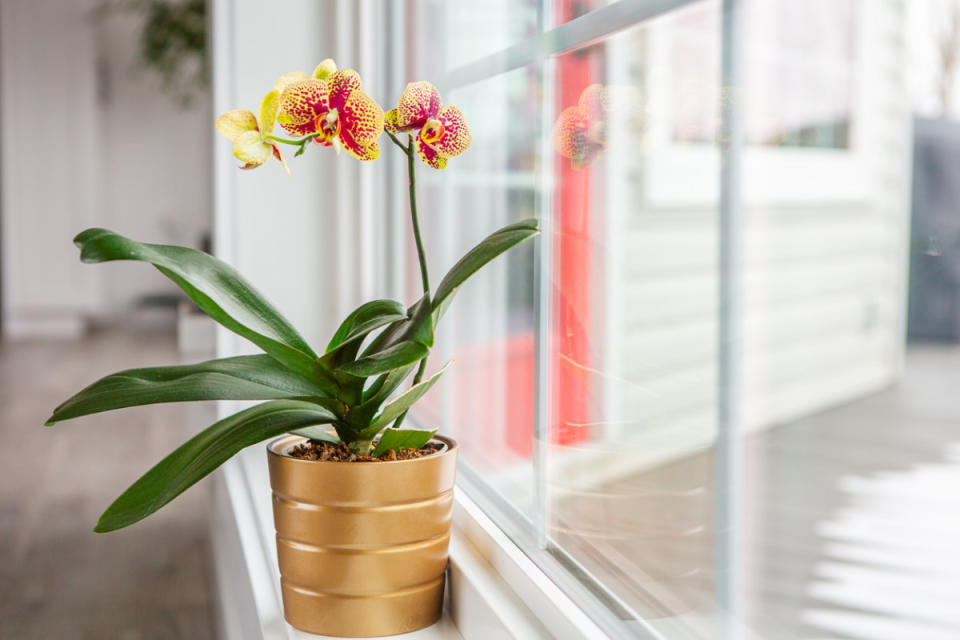
iStock
Native to southeast Asia and parts of Australia, the Moth Orchid is suitable for a seasoned grower who is up for a little challenge
"With good care, these orchids can stay in bloom for a few months each year," says Raffaele Di Lallo, the author of Houseplant Warrior, founder of plant care resource Ohio Tropics, and a member of the National Garden Bureau. "They are one of the best flowering houseplants for this reason, although they are a little different to care for."
However, Di Lallo says it'll be like old hat once you get the hang of it. Some top tips?
Use bark mix and clear plastic pots
Check root color—whitish is healthy, and they'll turn green after watering
Water every 5-7 days if growing in bark mix—"They don't like to dry out completely," Di Lallo says.
Direct sunlight isn't necessary, but getting 2-4 hours, especially from an Eastern-facing window, helps
27. Christmas Cactus
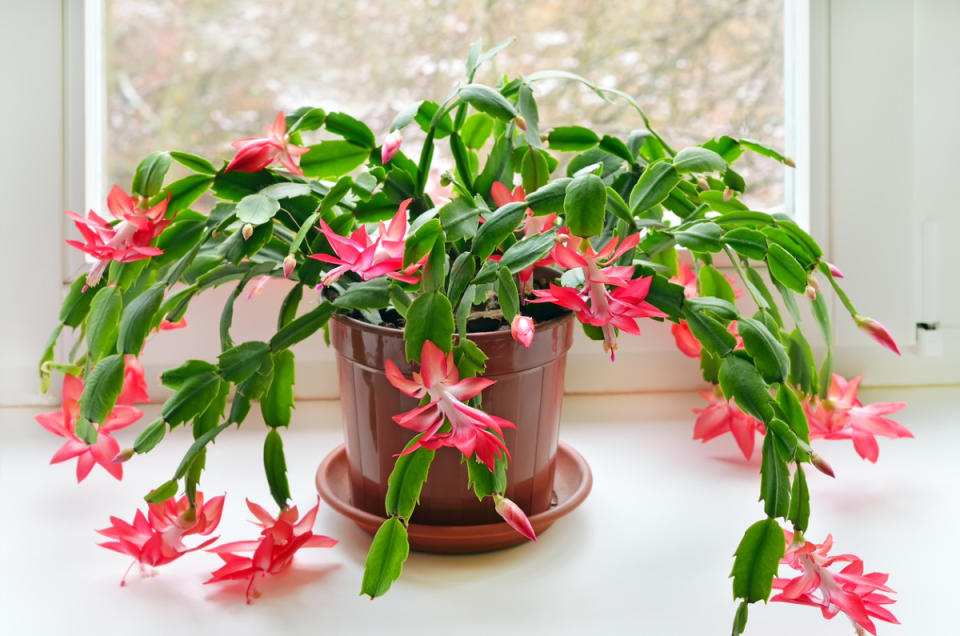
iStock
Unlike an indoor fir, these plants can last for years.
"These long-lived plants are often passed down to generations of family members," Di Lallo says. "Any window exposure will do, and they need enough light to flower, but keep in mind that if you don't give them uninterrupted darkness at night, it may prevent them from blooming."
28. Parlor Palm
Looking for an easy palm to grow indoors? Di Lallo suggests the Parlor Palm.
"The palm stays manageable in size and grows slowly, so it is great for small spaces," Di Lallo says. "They are perfectly happy in front of windows with no direct sun."
Use a moist-well-draining soil, and only allow the top inch to dry out. Once it does, it's time to water.
"If you let the soil dry out completely, your plant will develop many brown leaf tips and the lower fronds will turn brown," Di Lallo explains.
29. Oyster Plant (Tradescantia Spathacea)
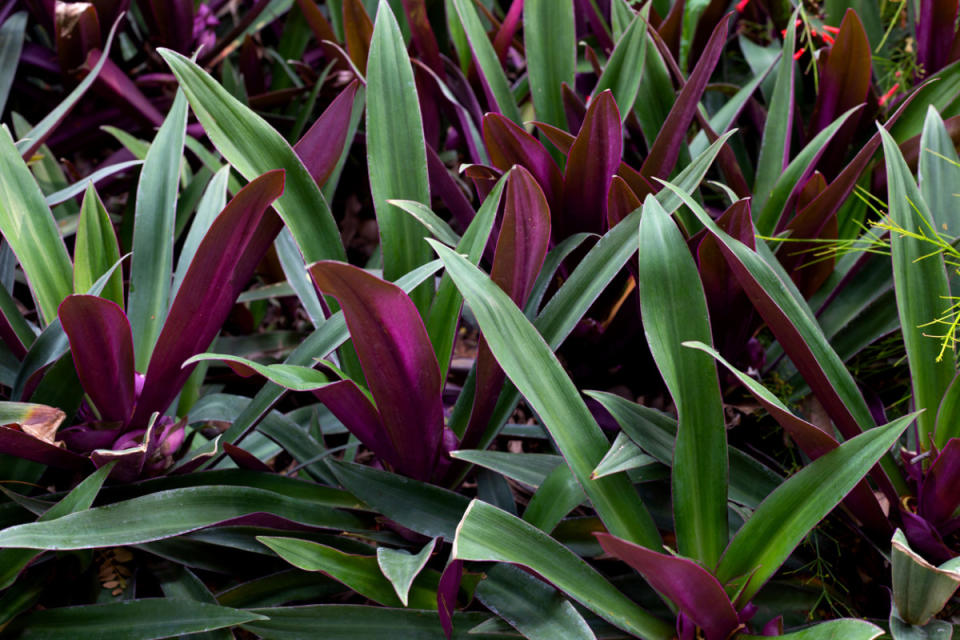
iStock
Less watering is generally more for the oyster plant, which works well as a houseplant but can also be repotted outdoors. It's best to let the soil dry at least two inches down for re-watering, making the oyster plant a low-maintenance favorite. They do best in bright, indirect light.
30. Tillandsia Xerographica
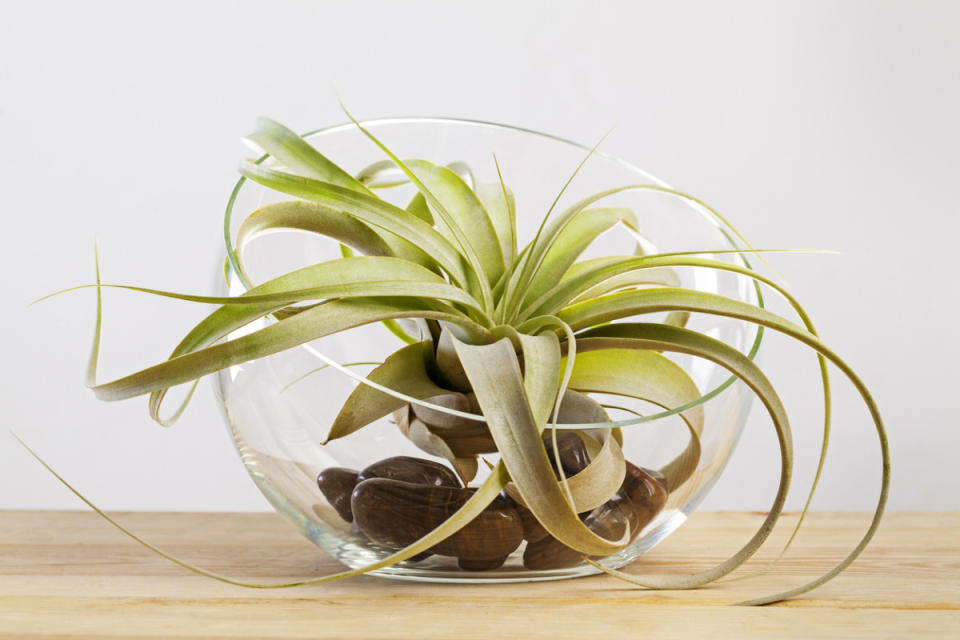
iStock
Di Lallo loves air plants, especially the Tillandsia xerographica.
"These are large air plants, and you can move them around easily since they require no pot or soil," Di Lallo says. "Simply soak them in water for half an hour or so once a week, shake out excess water, let them dry and place them back by their window."
These plants benefit from a few hours of direct sunlight daily.
Related: How to Be Happier in 31 Days, According to Mental Health Experts
31. Wax Plants (Hoyas)
No, not the Georgetown University mascot. Hoya is another genus with more than 500 species. Most are succulents, meaning they don't require much watering, but Steinkopf says the houseplants need bright light to bloom. And bloom, they will.
"The flowers are amazing," Steinkopf says. "Some of them have a wonderful aroma."
32. Boston Fern (Nephrolepis Exaltata)
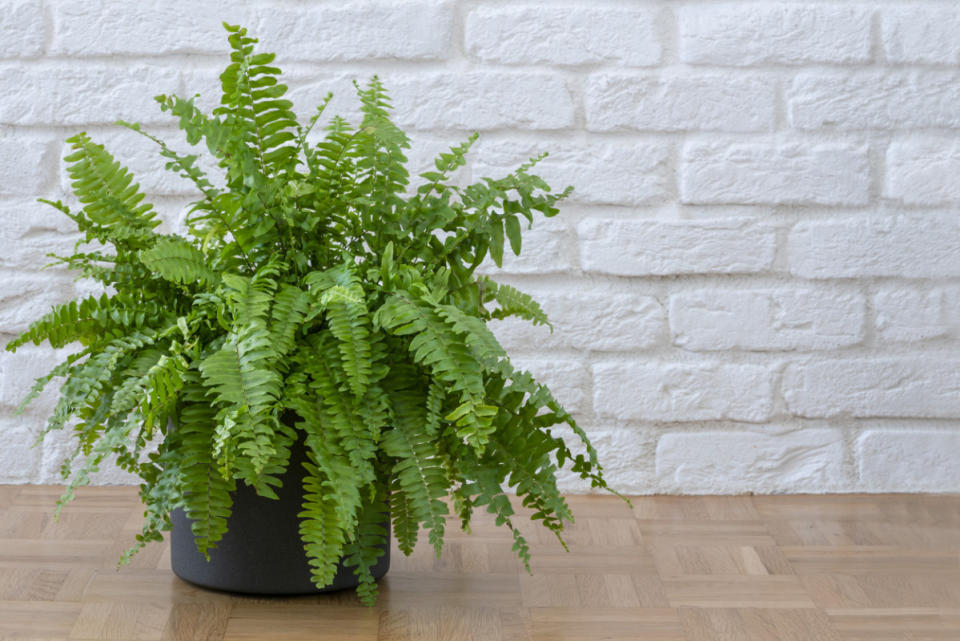
iStock
Steinkopf loves ferns, which don't need much light (but benefit from some direct sunlight each morning.)
"Ferns have a reputation for being finicky, but as long as they aren’t allowed to dry out, they aren’t that difficult to grow," Steinkopf says.
The Boston Fern, actually a tropical plant native to the Americas, certainly fits this bill.
33. Aglaonema Maria
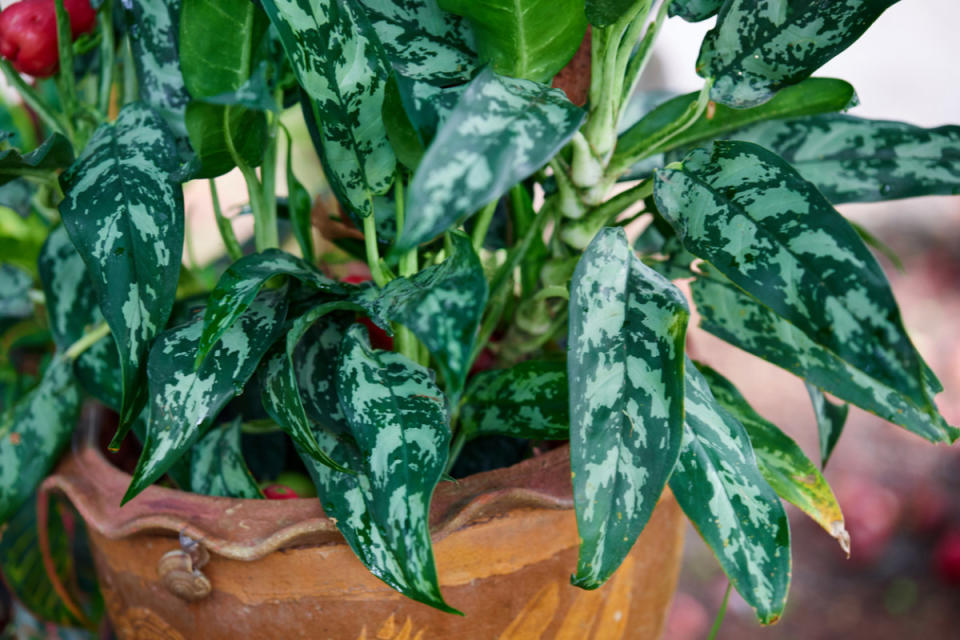
iStock
Steinkopf loves plants in the Aglaonema genus and has several in her personal collection. Plants like the Aglaonema Maria produce variegated leaves with pink, white, green and peach blooms with enough light. Combinations of hues are also possible.
"They are perfect houseplants because they don’t need full sun to keep the leaves bright and colorful," she says. "They have semi-succulent stems, so they don’t need an abundance of water."
34. Global Green Pothos (Epipremnum Aureum Global Green)
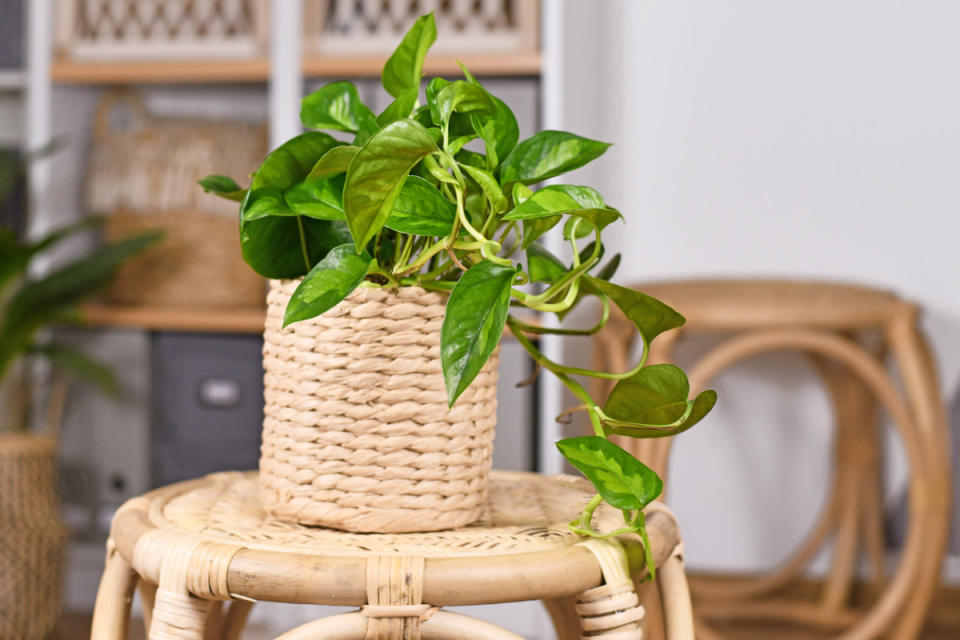
iStock
Hancock calls the Global Green Pothos a step up from the Golden Pothos.
"This newer variety from Japan bears beautiful heart-shaped dark green leaves delightfully variegated with lighter centers," Hancock says. "This green-on-green effect is a subtle way to add beauty and depth to your plant display."
Hancock boasts the Global Green Pothos is "delightfully versatile" because it can grow as a climbing or trailing houseplant.
Related: To Trail or To Climb? You Choose With the 25 Best Indoor Hanging Plants
35. Cobra Monstera (Monstera Standleyana Albo-Variegata)

Costa Farms
This once-rare houseplant is becoming more common—and Hancock is a huge fan.
"Here’s a fast-growing, variegated houseplant [that] I’m just in love with," he says. "It features lush, dark green leaves streaked and splashed with creamy white. Each leaf is different, making this plant a living work of art. It’s also pretty easy to propagate and share with friends or family."
36. Pink Princess Philodendron (Philodendron Pink Princess)
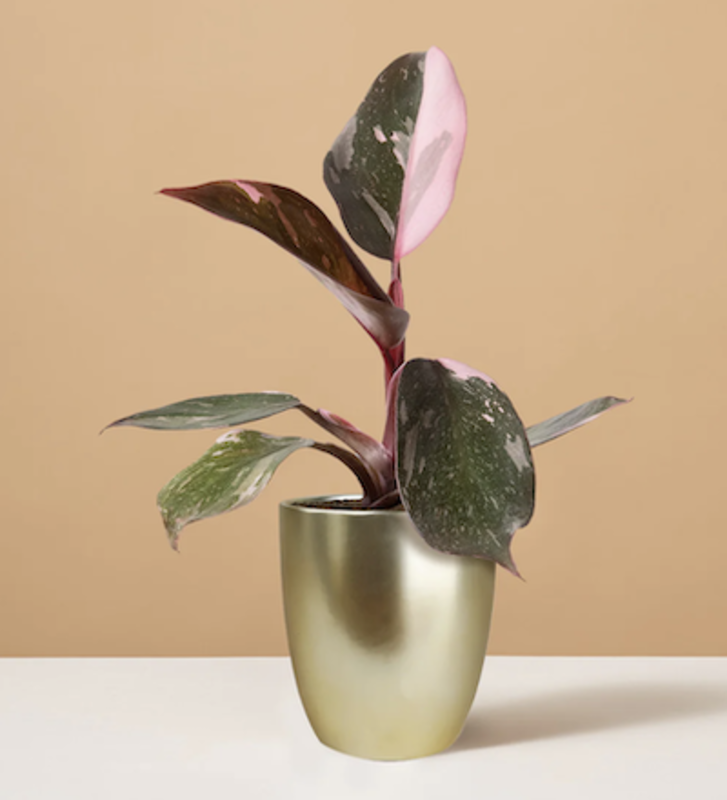
Costa Farms
The pink princess Philodendron majorly trended during the pandemic, and the love fest is still going strong (maybe thanks to 2023's Barbiecore and 2024's Mean Girls moments?).
"Pink princess Philodendron is a showstopper that bears dark green leaves marked with shades of pink, from soft, cotton-candy tones to hot Barbie pink," Hancock says. "With time, it wants to climb, and if you give it good support and plenty of light, it can get 6 feet tall over the years with leaves that can reach more than a foot long."
Give this plant the royal treatment by providing plenty of bright light (it's not a diva, though—it can tolerate medium light).
37. Philodendron Tortum
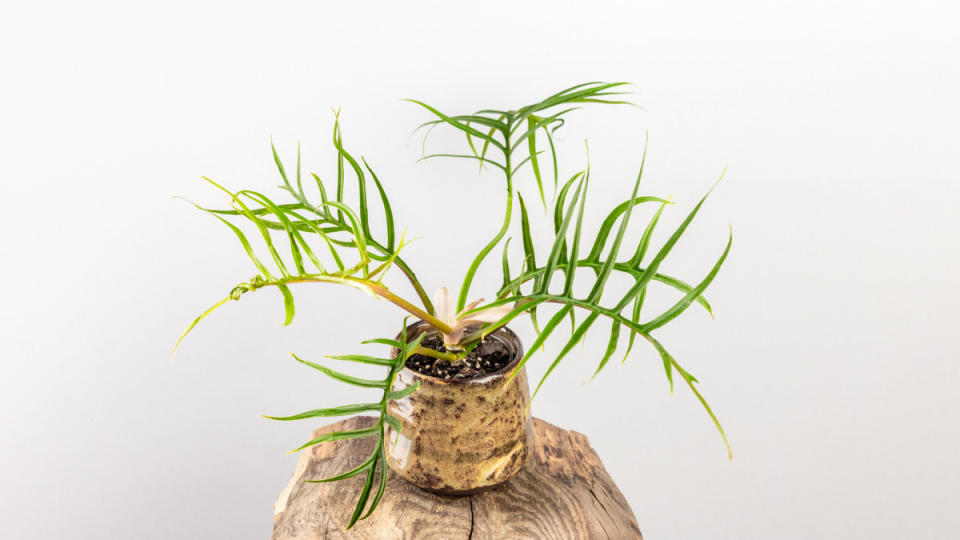
iStock
Hancock can't get enough of this plant.
"Unlike other philodendron species, its leaves are finely dissected, making them look more like palm or fern fronds than your typical philodendron," he says. "This adds a big dose of texture to your plant collection, especially as it matures because the leaves get bigger with time."
It wants to climb, so any support you can give is appreciated. However, you can also keep it compact with occasional trimming.
38. Alocasia Silver Dragon
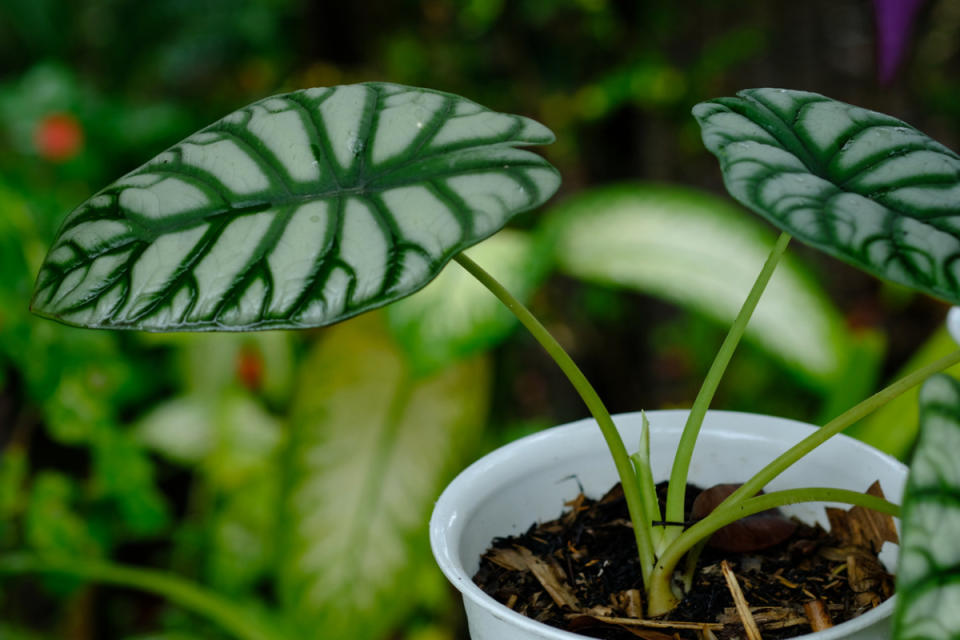
iStock
Hancock says this houseplant has also enjoyed skyrocketing popularity recently.
"This beauty is one of my favorites because it stays small and has gorgeous silver leaves," Hancock says. "This silvery coloration really pops out when paired with more traditional houseplants that have darker green leaves, but also makes a great complement to houseplants variegated with white or silver."
Any general-purpose soil will do when potting.
39. Basil (Ocimum Basilicum)
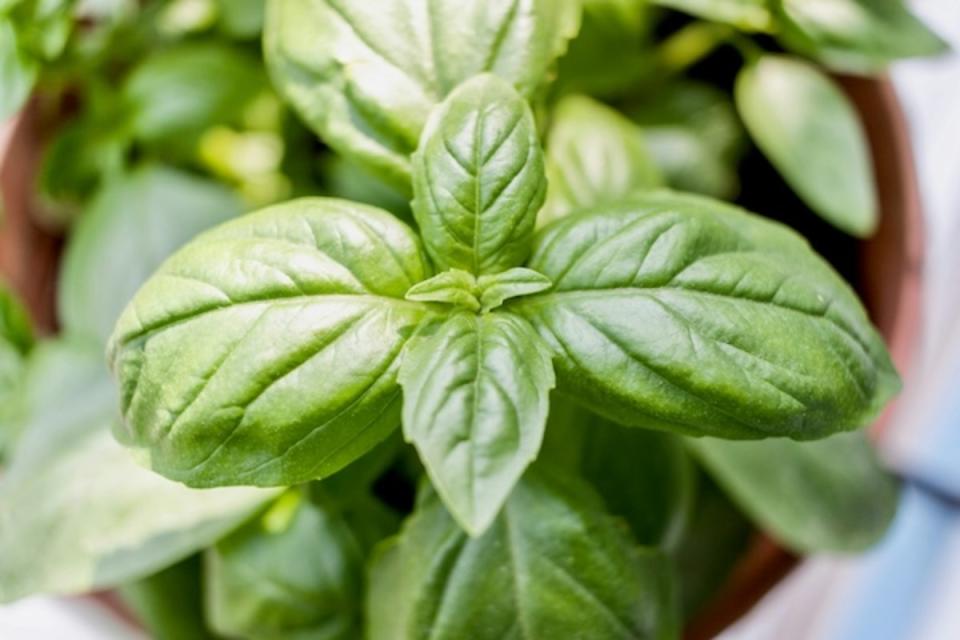
Unsplash
Does picking fresh basil off a plant, giving it a rinse and putting it in sauces sound like a plan? Basil makes for a perfect windowsill plant (it thrives in bright light). Ensure the soil remains moist and give it a mist here and there.
40. Rosemary (Salvia Rosmarinus)
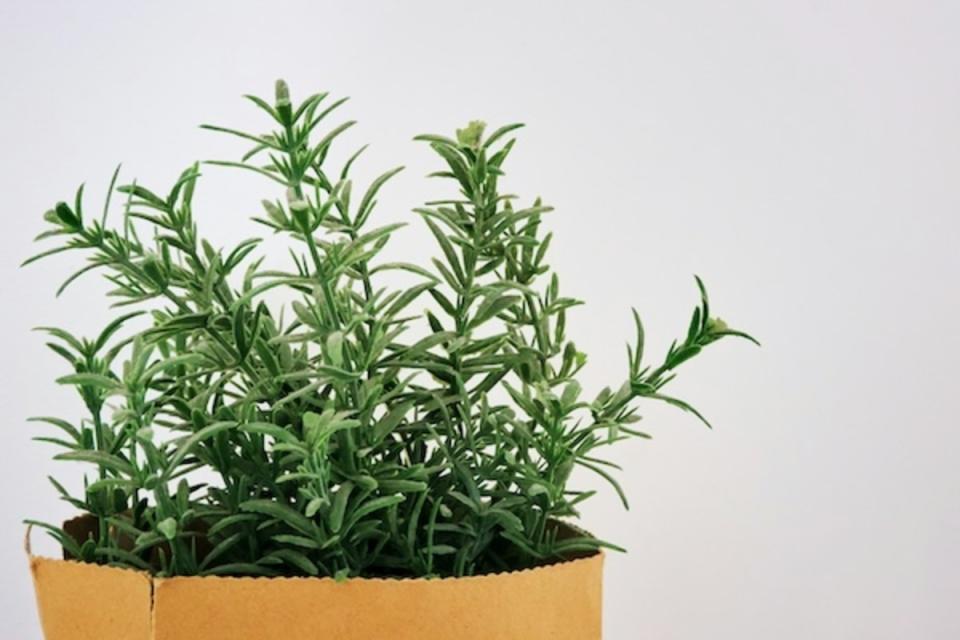
Unsplash
Rosemary can add flavor to food and even water and craft cocktails—mixology night, anyone? The herb benefits from being placed on windowsills that get plenty of sun, but it'll forgive you if you forget to water it—sometimes.
41. Jade Plant (Crassula Ovata)
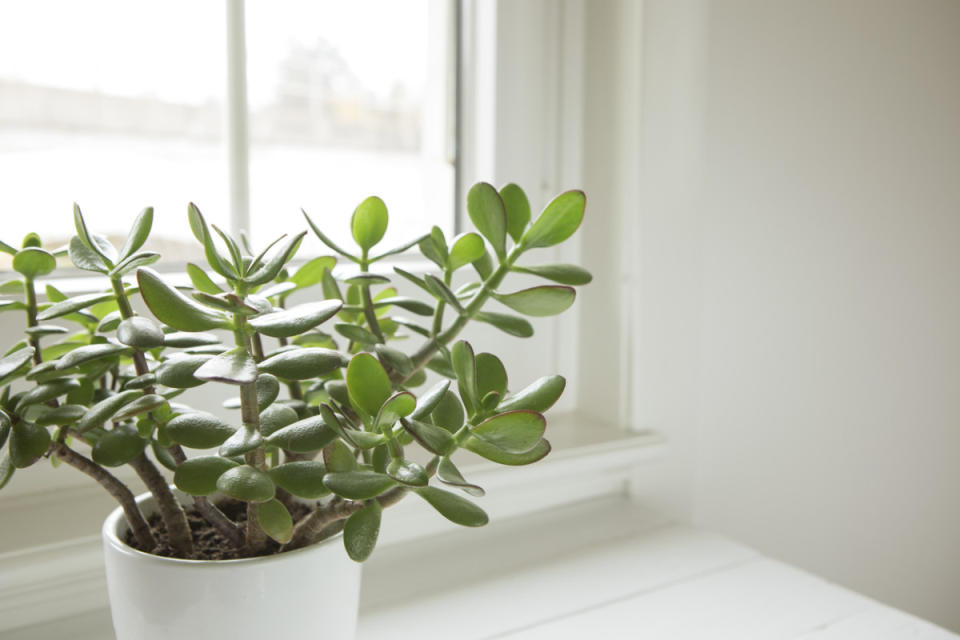
iStock
This time-honored succulent doesn't need constant watering (however, it benefits from consistently moist soil during the spring and summer). However, you'll want to ensure it gets enough sunlight. Placing it on the windowsill that gets the most natural light is perfect.
42. Areca Palms (Dypsis Lutescens)
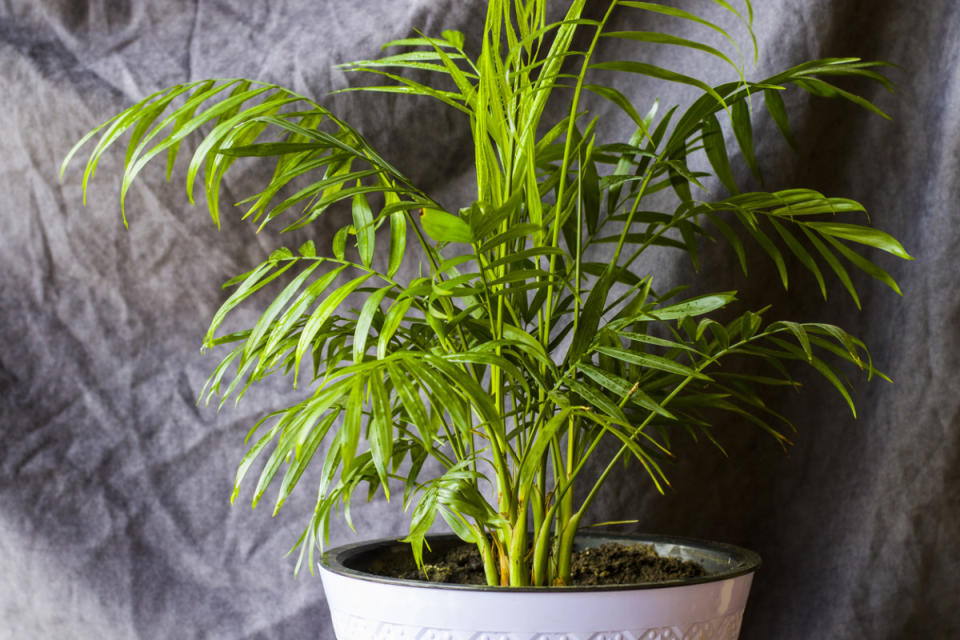
iStock
With the proper care, this stunning statement-making plant can grow as tall as 8 feet. What does that entail? Bright, indirect light, well-draining soil and allowing the soil to dry between waterings. You may also see it sold as a butterfly palm or bamboo palm.
43. Staghorn Fern
The Staghorn Fern is a charming plant named for its antler-shaped fronds. It thrives in medium to bright indirect light and minimal watering (every week or two). Extra humidity helps. Bonus: It's pet-friendly.
44. Calamansi Tree
Want to grow fruit indoors? The Philippines-native Calamansi Tree produces tart fruits. Think of a cross between mandarin orange and a kumquat that lets you make Philippines-style lemonade. Glossy leaves and white flowers that add a good smell to your home make it a perfect indoor plant. You may also see it referred to as a calamondin.
45. Baby Rubber Plant (Peperomia Obtusifolia)
This compact plant has thick, fleshy leaves that look rubber-like. Like rubber, this durable plant only requires watering once a week (or every other week). Pro tip: Keep it in a low-light setting if you want (or need, thanks to forgetfulness) to go longer between waterings.
Expert Sources
Lauren Landers, a Maine Master Gardener volunteer
Effects of Indoor Plants on Human Functions: A Systematic Review with Meta-Analyses. International Journal of Environmental Research and Public Health.
Lisa Eldred Steinkopf, The Houseplant Guru
Justin Hancock, a horticulturist with Costa Farms.
Fern Berg, the founder of Tree Vitalize
Autumn Hilliard-Knapp, a horticulturist with Perfect Plants.
Zebra Haworthia. ASPCA.
Raffaele Di Lallo, the author of Houseplant Warrior, founder of plant care resource Ohio Tropics and a member of National Garden Bureau





















